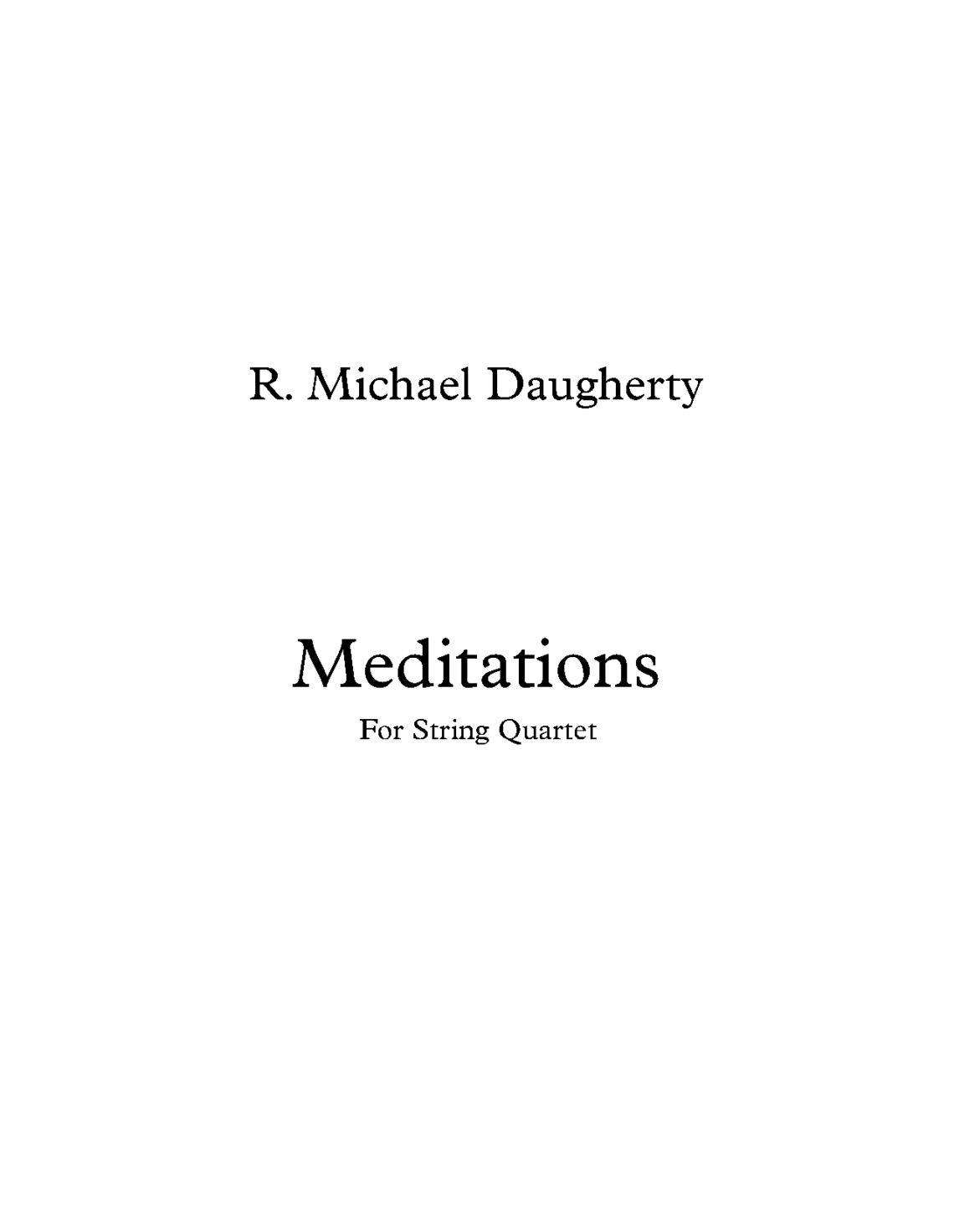
Meditations
PROGRAM NOTES:
There are four meditations in this composition, each with a different character.
The first is largely melancholy, despite the energetic pizzicato that begins the movement. There is conflict here. The pizzicato is balanced by a sustained cello melody in A minor that gradually descends from C5 to E3. This moves to a brief, sustained passage moving to C major. Polyphony based on a head motive creates the B section. The polyphony is interrupted by a staccato rhythm. An expanded A section follows pitting pizzicato against sustained melody. The C section begins with the staccato rhythm and moves to head-motive polyphony. One last A section follows, then a coda filled with descending patterns.
Within the second movement there is the dichotomy between the vivo and andante sections. The vivo section is bright and cheerful. The andante is somewhat contemplative and often somber.
The Adagio movement is a sectional form resembling an arch: ABCA. If anything it is even more somber than the first movement due to the extremely slow tempo and the sustained upper voices in a very high range against a repeated D2 from the cello. The opening section borrows the head motive from the first meditation as its starting point. The motive is fleshed out by the addition of three quarter notes rising and falling by thirds to complete each phrase. The B section is loosely a mirror image of the A section. The C section is a dialog between instruments based on three notes descending by step. The A section returns in its original form to close the movement.
Not all meditations need to be contemplative. This movement is bright, positive and largely major. It begins with an ascending motive that in an earlier age might have been described as a “rocket theme.” It is followed immediately by a second motive consisting of two sixteenths and an eighth followed by staccato sixteenths spaced an eighth apart. The descending eighth notes that complete the introduction seem to be a cheerful mocking of the descending patterns of the opening movement. The “rocket theme” and second motive then swirl about playfully. These motives are finally interrupted by a sustained melody first heard in the viola part. Its opening leaps are reminiscent of the polyphonic motive that dominated the first meditation. This new melody is treated to a polyphonic stretto by the other instruments. In turn, this melody is interrupted by the three notes descending by step that were introduced in the C section of the second meditation. A slow version of the rocket theme brings the movement back to its opening material as the meditation ends.
To hear an excerpt from Meditation I, click here.
Duration: 18’40”
Difficult
When you buy music on this site, you are purchasing a PDF from which to make your own copies. While I would love to have my works widely distributed, I trust that you will make copies only for yourself and the group you represent. Thanks.
6/6/15

